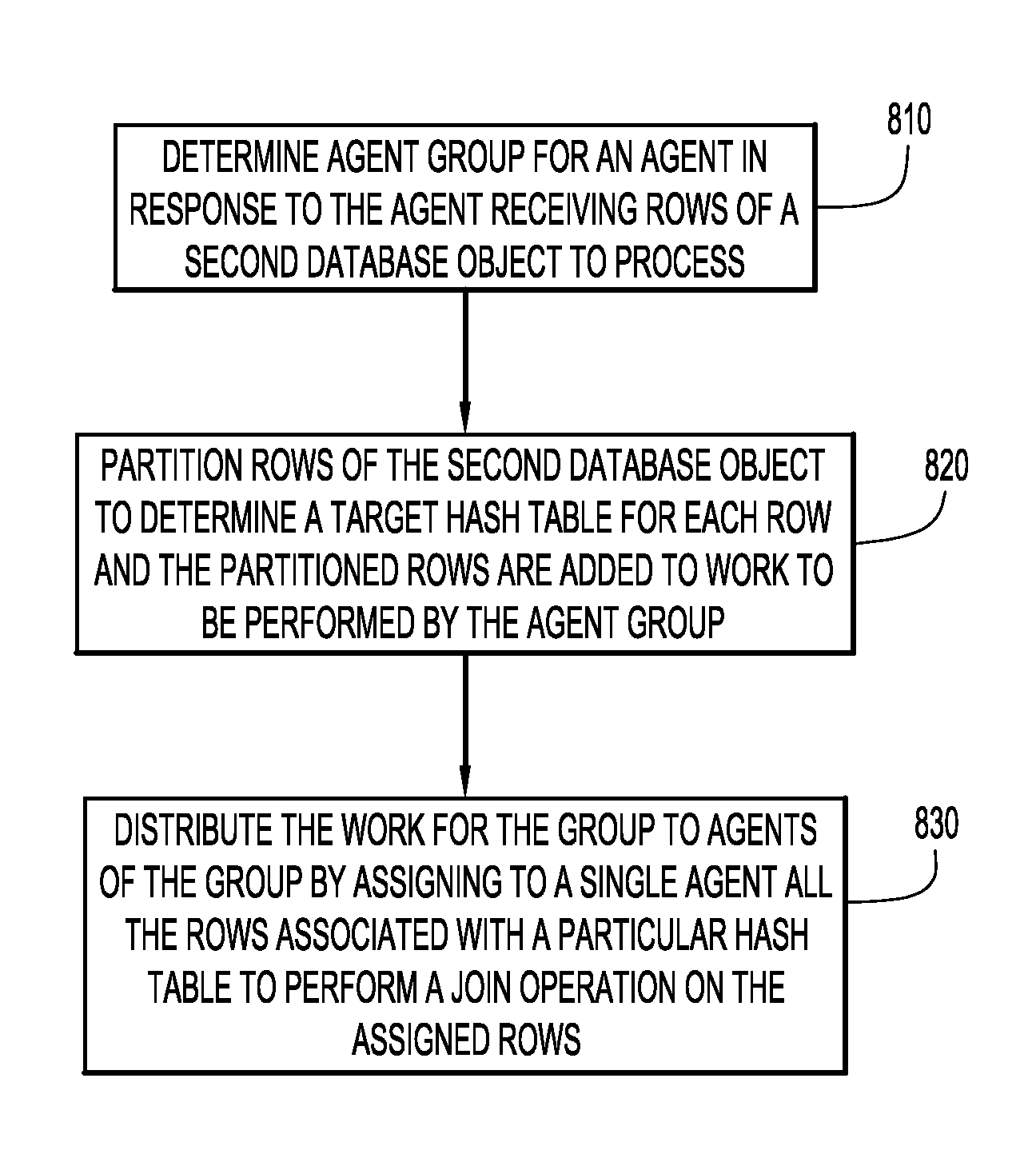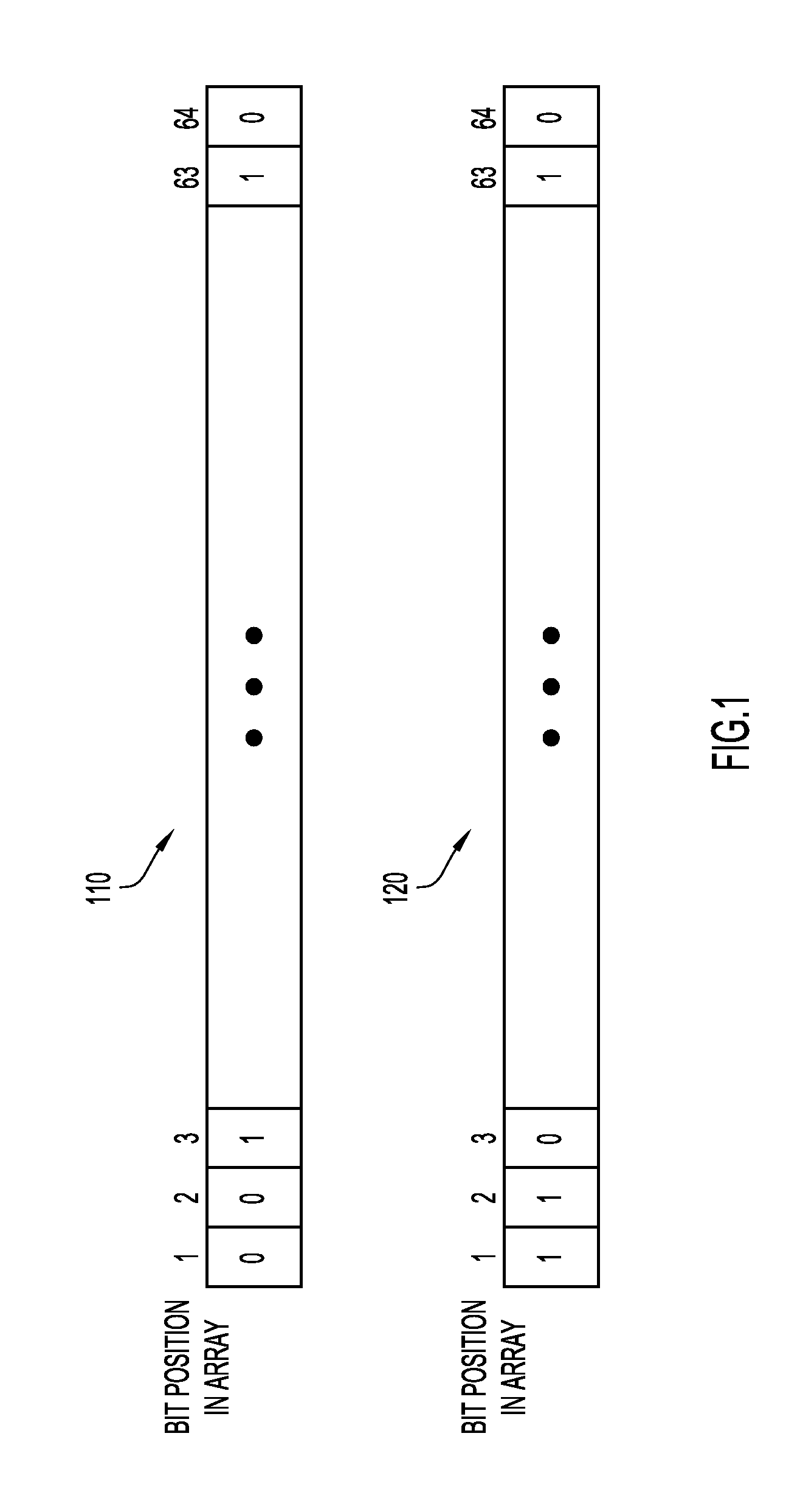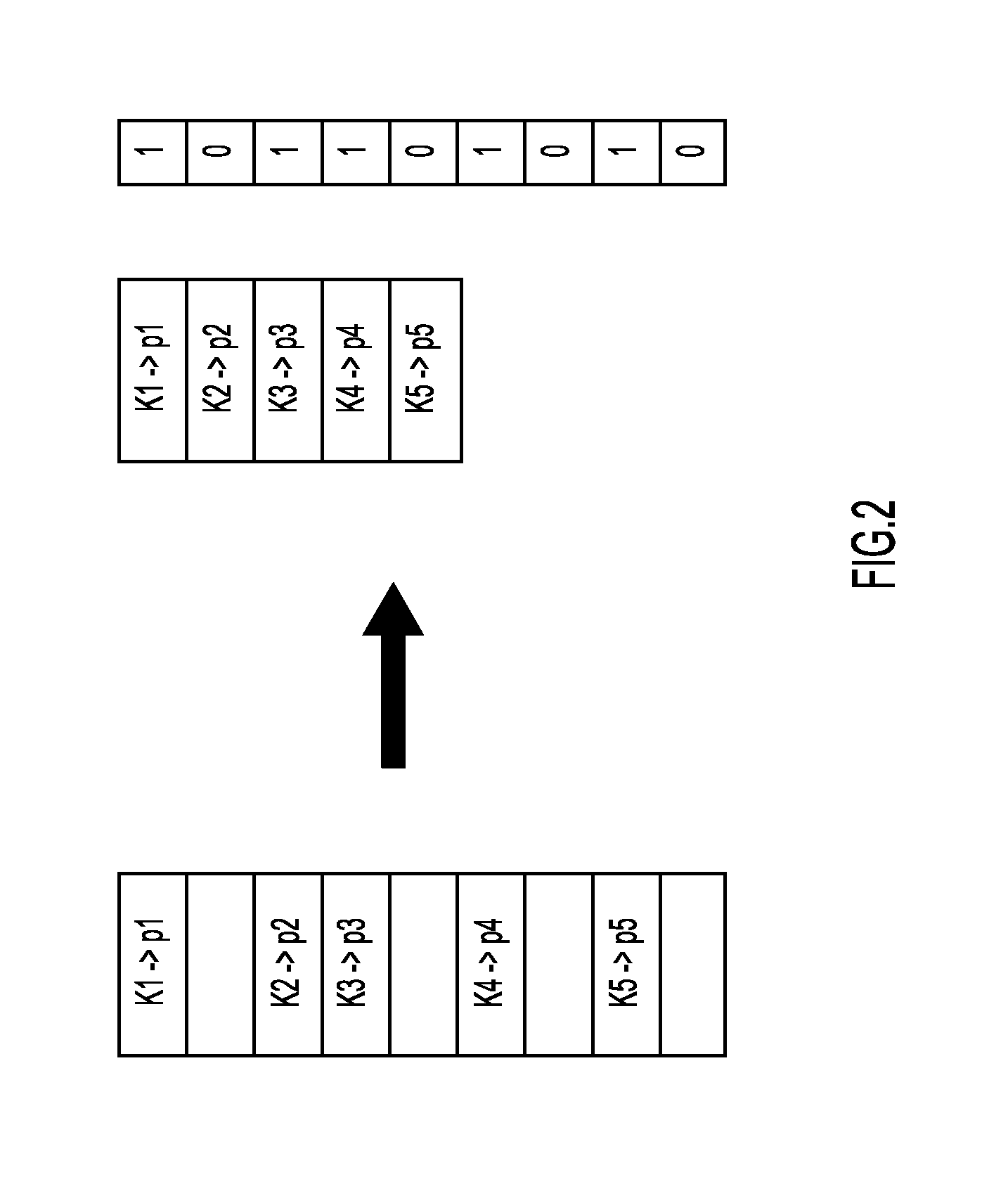Join operation partitioning
a technology of operation and partitioning, applied in the field of joint operation partitioning, can solve problems such as and achieve the effect of reducing the possibility of collisions of hash values
- Summary
- Abstract
- Description
- Claims
- Application Information
AI Technical Summary
Benefits of technology
Problems solved by technology
Method used
Image
Examples
Embodiment Construction
[0018]Present invention embodiments operate to reduce hash collisions in a hash table to improve the performance of the hash table. Hash collisions are practically unavoidable when hashing a random subset of a large set of possible keys. By way of example, if 1000 keys are hashed into 100,000 buckets, there is a small but not insignificant chance that at least two of the keys are hashed to the same slot or bucket even assuming a uniform random distribution, thereby resulting in a hash collision. As such, collision reduction is an important part of hash table design.
[0019]Conventionally, there is a tradeoff between hash table fill factor (also referred to in the art as “load factor”) and hash collision rate. Typically, hash tables are not filled beyond about 50-60% because collision rates go up dramatically with fills beyond this amount. By having a fill rate below 50%-60%, the hash table will take up more space, and will fit lower in the cache hierarchy (e.g., as a Level 2 or Level ...
PUM
 Login to View More
Login to View More Abstract
Description
Claims
Application Information
 Login to View More
Login to View More - R&D
- Intellectual Property
- Life Sciences
- Materials
- Tech Scout
- Unparalleled Data Quality
- Higher Quality Content
- 60% Fewer Hallucinations
Browse by: Latest US Patents, China's latest patents, Technical Efficacy Thesaurus, Application Domain, Technology Topic, Popular Technical Reports.
© 2025 PatSnap. All rights reserved.Legal|Privacy policy|Modern Slavery Act Transparency Statement|Sitemap|About US| Contact US: help@patsnap.com



